President Donald Trump signaled he may again reverse himself on a key part of his tariff plan, this time telling reporters that he is “looking at” temporary exemptions from the 25% tariffs covering imported autos and auto parts. Experts warned the plan would add thousands of dollars to the cost of both U.S. and foreign-made vehicles and cost the industry nearly 2 million sales for all of 2025. Headlight.News has more.
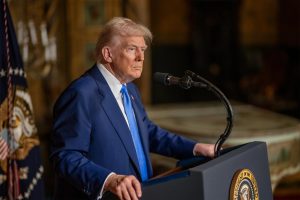
President Donald Trump paused tariffs for 90-days – except those impacting the auto industry. He’s now mulling halting those.
President Donald Trump’s trade war has rocked the U.S. economy, earlier this month triggering one of the largest stock market plunges in history. That led the White House to announce a pause on much of his tariff plan, with Trump subsequently backing off on imported cellphones and computers, as well.
In what would be another sudden flip-flop, the president now is “looking at” ordering at least a temporary delay in another key part of the trade plan, the 25% tariffs covering imported autos and auto parts, he told reporters late Monday.
“Look, I’m a very flexible person. I don’t change my mind, but I’m flexible,” Trump said.
Any relaxation of auto tariffs would come in response to mounting concerns that the auto tariffs would hammer many motorists, especially those seeking entry-level vehicles, by raising the price of the typical automobile by $3,000 or more, according to industry analysts. One new study forecasts demand could drop by 1.8 million for all of 2025, equal to about 11% of the 16 million vehicles Americans purchased in 2024.
Pushback
Trump’s auto tariffs — like the broader sanctions he initially enacted, then reversed, were intended to force automakers and suppliers to shift production to the United States. While some parts and even fully assembled vehicles could move to the U.S. over the next year or two, industry leaders and analysts alike have warned that a more extensive transition would be difficult to accomplish quickly.
Typically, it takes a couple years or more for an automaker to approve plans for a new assembly plant, allocate capital, pick a site and then get the facility built, Jeff Guyton, Mazda Motor’s CFO told Headlight.News. Beyond that, it “takes a lot of time to get people trained and happy and (able to work) at line speed.”
In the meantime, the tariffs would likely have a devastating impact on the auto

Mazda CEO Jeff Guyton this week presented to his board what he called “Plan A and Plan B” to address the Trump tariffs.
industry, the Anderson Economic Group forecasting the price of a typical SUV — the type of vehicle making up the bulk of the U.S. market – could rise by $3,000. High-end products could jump $10,000 or more. And such increases would come at a time when new vehicle prices have already increased roughly 40% over the past decade, Kelley Blue Book reporting the average model sold in March cost $47,462, a near record.
While new vehicle sales have surged in recent months, analysts have attributed that largely to buyers racing to beat tariffs. A study released this month by Telemetry Research estimated overall demand for 2025 would fall 1.8 million units short due to the tariffs.
“They need a little bit of time”
“I’m looking at something to help some of the car companies, where they’re switching to parts that were made in Canada, Mexico and other places,” Trump told reporters during a session at the Oval Office. “And they need a little bit of time, because they’re going to make them here.”
Exactly what Trump has in mind he didn’t disclose, though he has backed off substantially from his original sanction plans as resistance has grown, not only among consumers and the business community but even within a small group of influential Republican leaders. That said, the signal from the president suggests he may not completely back down from automotive tariffs but might outline specific exemptions or a limited delay.
“Look, I’m a very flexible person. I don’t change my mind, but I’m flexible,” Trump said. “And you have to be. You just can’t have a wall. Sometimes you have to go around it, under it or above it.”
More Tariff News
- Trump Pauses Most Tariffs — But Leaves Those Impacting Autos in Place
- Frantic Automakers Search for Tariff Strategies
- Mazda May Spread the Pain to Reduce Tariff Impact
Factual errors
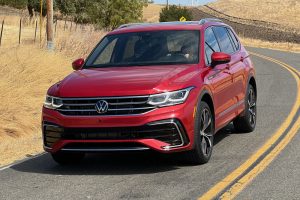
Trump expressed concerns about having “millions” of “their” cars in the U.S., meaning VW and other European makers.
“We have millions of their cars ‒ BMW, Volkswagen, Mercedes, Benz, many others,” Trump said during the White House meeting, showing he remains concerned about auto imports, especially those from Germany.
Trump made some factual errors in his comments on Monday. “There are no Chevrolets in Munich, I can tell you that,” he asserted. In fact, General Motors does sell a small number of Chevrolets — notably the Corvette — in Europe, as well as Cadillacs, and CEO Mary Barra has indicated a goal of increasing the company’s presence there as it continues rolling out more battery-electric vehicles.
Meanwhile, European manufacturers have expanded exports. BMW, in particular, has become this country’s largest automotive exporter, its factory in Spartanburg, South Carolina being its largest plant in the world. It uses the facility as its sole source for several product lines, including the popular X5 SUV.
Meanwhile, the trade war with China — which Trump actually has escalated in recent days — is short-circuiting plans by both GM and Ford to expand their exports to the huge Chinese market.


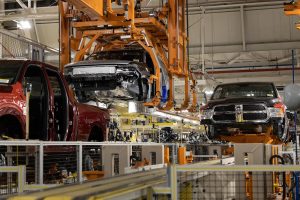
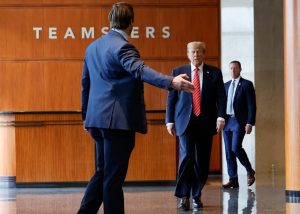
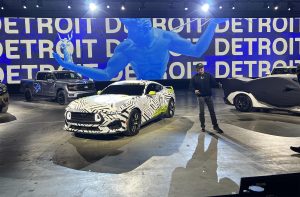
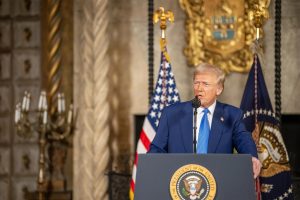
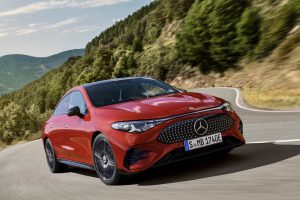
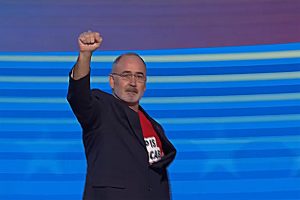
The only answer, Trump has too much going on or he caught a Biden virus.